Themed collection Crystal engineering of composite materials

Crystal engineering of composite materials
Welcome to this CrystEngComm themed issue entitled “Crystal engineering of composite materials.”

CrystEngComm, 2016,18, 5975-5976
https://doi.org/10.1039/C6CE90129H
Advanced composites based on relaxor-ferroelectric single crystals: from electromechanical coupling to energy-harvesting applications
Domain-engineered relaxor-ferroelectric single crystals with compositions near the morphotropic phase boundary are highlighted as a key component for high-performance piezo-active composites.
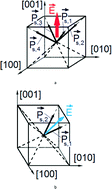
CrystEngComm, 2016,18, 5986-6001
https://doi.org/10.1039/C6CE00825A
Crystal growth engineering for high efficiency perovskite solar cells
The perovskite solar cell is based on organic–inorganic lead halides such as methylammonium CH3NH3PbI3 or formamidinium HC(NH2)2PbI3 as light harvesters.
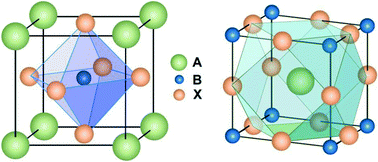
CrystEngComm, 2016,18, 5977-5985
https://doi.org/10.1039/C6CE00813E
Peptide-based bimetallic nanostructures with tailored surface compositions and their oxygen electroreduction activities
Peptide-based self-assembly affords gold−platinum bimetallic nanostructures with the controlled surface compositions.
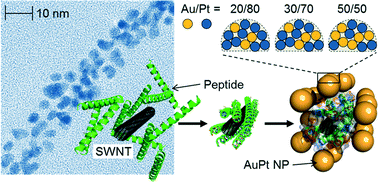
CrystEngComm, 2016,18, 6024-6028
https://doi.org/10.1039/C6CE00841K
Unexpected solution phase formation of hollow PtSn alloy nanoparticles from Sn deposition on Pt dendritic structures
Hollow nanospheres of the PtSn alloy are obtained via a non-Kirkendall process by using a dendritic Pt core and surface alloying.

CrystEngComm, 2016,18, 6019-6023
https://doi.org/10.1039/C6CE00831C
Hydrothermal-assisted crystallization for the synthesis of upconversion nanoparticles/CdS/TiO2 composite nanofibers by electrospinning
Upconversion nanoparticles (UCNPs)/CdS/TiO2 nanofibers have been fabricated successfully via electrospinning technique and hydrothermal crystallization process.
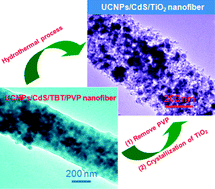
CrystEngComm, 2016,18, 6013-6018
https://doi.org/10.1039/C6CE00987E
Synthesis of bare Pt3Ni nanorods from PtNi@Ni core–shell nanorods by acid etching: one-step surfactant removal and phase conversion for optimal electrochemical performance toward oxygen reduction reaction
Synthesis of highly active, bare Pt3Ni nanorods is accomplished by removal of the Ni sheath of PtNi@Ni nanorods.
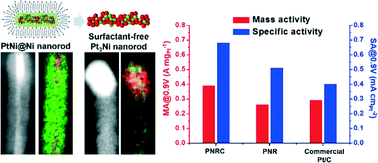
CrystEngComm, 2016,18, 6002-6007
https://doi.org/10.1039/C6CE00830E
In situ morphological transformation and investigation of electrocatalytic properties of cobalt oxide nanostructures toward oxygen evolution
Morphologies of cobalt oxide nanostructures could be tuned from nano-needles to nano-blanket, micro-plates, and nano-sheets, in which structural transformation could lead to enhanced performance toward oxygen evolution.
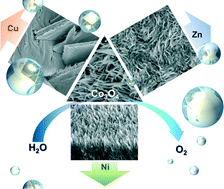
CrystEngComm, 2016,18, 6008-6012
https://doi.org/10.1039/C6CE00796A
Thermal structural stability of a multi-component olivine electrode for lithium ion batteries
In this paper, the structural evolution of Li(Mn1/3Fe1/3Co1/3)PO4, which is a promising multi-component olivine cathode materials, is investigated using combined in situ high-temperature X-ray diffraction and flux neutron diffraction analyses at various states of charge.
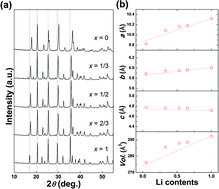
CrystEngComm, 2016,18, 7463-7470
https://doi.org/10.1039/C6CE00944A
Formation of reworkable nanocomposite adhesives by dielectric heating of epoxy resin embedded Fe3O4 hollow spheres
Embedding the dielectric sensitive nanomaterial (Fe3O4 hollow nanospheres) in epoxy adhesives to enable post-cure degradation by dielectric heating.

CrystEngComm, 2016,18, 6096-6101
https://doi.org/10.1039/C6CE01359G
Effective control of crystal grain size in CH3NH3PbI3 perovskite solar cells with a pseudohalide Pb(SCN)2 additive
We demonstrate effective morphology control of a CH3NH3PbI3 perovskite film with a lead(II) thiocyanate additive.
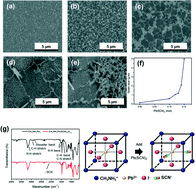
CrystEngComm, 2016,18, 6090-6095
https://doi.org/10.1039/C6CE00842A
One-pot synthesis of Pd@Pt core–shell nanocrystals for electrocatalysis: control of crystal morphology with polyoxometalate
Pd@Pt core–shell nanocrystals with well-defined morphologies and controlled surface structures were prepared by a one-pot polyoxometalate-mediated synthesis method.
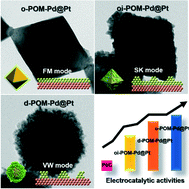
CrystEngComm, 2016,18, 6029-6034
https://doi.org/10.1039/C6CE00816J
Shape effects of nickel phosphide nanocrystals on hydrogen evolution reaction
Ni2P nanospheres mainly composed of the Ni2P(001) surface showed higher hydrogen evolution activity than Ni2P nanorods with the Ni2P(210) surface.
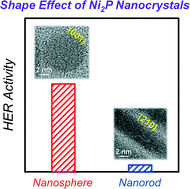
CrystEngComm, 2016,18, 6083-6089
https://doi.org/10.1039/C6CE00985A
Solvation, exchange and electrochemical intercalation properties of disodium 2,5-(dianilino)terephthalate
The layered disodium 2,5-(dianilino)terephthalate is able to chemically exchange metal cations, accommodate organic polar molecules as well as host anions under electrochemical charging conditions.
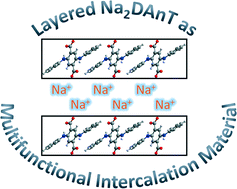
CrystEngComm, 2016,18, 6076-6082
https://doi.org/10.1039/C6CE01112H
Tunable interfaces on tetracene and pentacene thin-films via monolayers
To eliminate many of the traditional weaknesses of thin-film organic semiconductor materials, chemistry has been developed which reacts with the surface of these materials in a manner reminiscent of monolayers on traditional substrates.
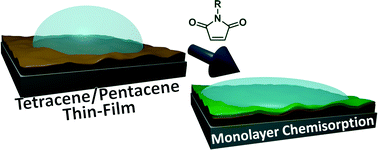
CrystEngComm, 2016,18, 6062-6068
https://doi.org/10.1039/C6CE00728G
Crystal engineering in 3D: converting nanoscale lamellar manganese oxide to cubic spinel while affixed to a carbon architecture
By applying differential pair distribution function analyses to MnOx-painted carbon nanofoam papers, we quantify the manganese oxide speciation as the nanoscale oxide transitions from disordered NaMnOx to spinel LiMn2O4.
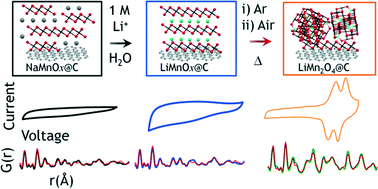
CrystEngComm, 2016,18, 6035-6048
https://doi.org/10.1039/C6CE00861E
Air-stable CuInSe2 nanoparticles formed through partial cation exchange in methanol at room temperature
Air-stable CuInSe2 nanoparticles were synthesized through partial cation exchange of Cu2−xSe nanoparticles with In3+ in methanol at room temperature. Adjustment of the reaction period made it possible to tailor the optical bandgap in the range of 1–2 eV.
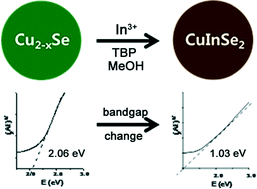
CrystEngComm, 2016,18, 6069-6075
https://doi.org/10.1039/C6CE00950F
Novel Pd13Cu3S7 nanotubes with high electrocatalytic activity towards both oxygen reduction and ethanol oxidation reactions
Pd13Cu3S7 nanotubes were synthesized by a galvanic reaction, and the nanotubes exhibited enhanced electrocatalytic activity for the ORR and for ethanol oxidation.
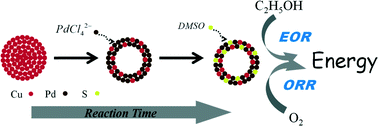
CrystEngComm, 2016,18, 6055-6061
https://doi.org/10.1039/C6CE00688D
The confinement of SnO2 nanocrystals into 3D RGO architectures for improved rate and cyclic performance of LIB anode
In this study, we demonstrate the synthesis of a composite with SnO2 nanoparticles anchored on three-dimensional (3D) reduced graphene oxide (RGO) as an anode for Li ion batteries (LIBs).

CrystEngComm, 2016,18, 6049-6054
https://doi.org/10.1039/C6CE00362A
About this collection
This themed issue focuses on crystal engineering of composite materials, particularly in the areas of energy conversion and energy storage, providing insights into the growth behaviour of these complex systems. The issue addresses different aspects of crystal design in and for hybrid materials, such as changes in crystal growth behaviour – namely, changes in morphology or phase, on different supports or by additional components in the system.